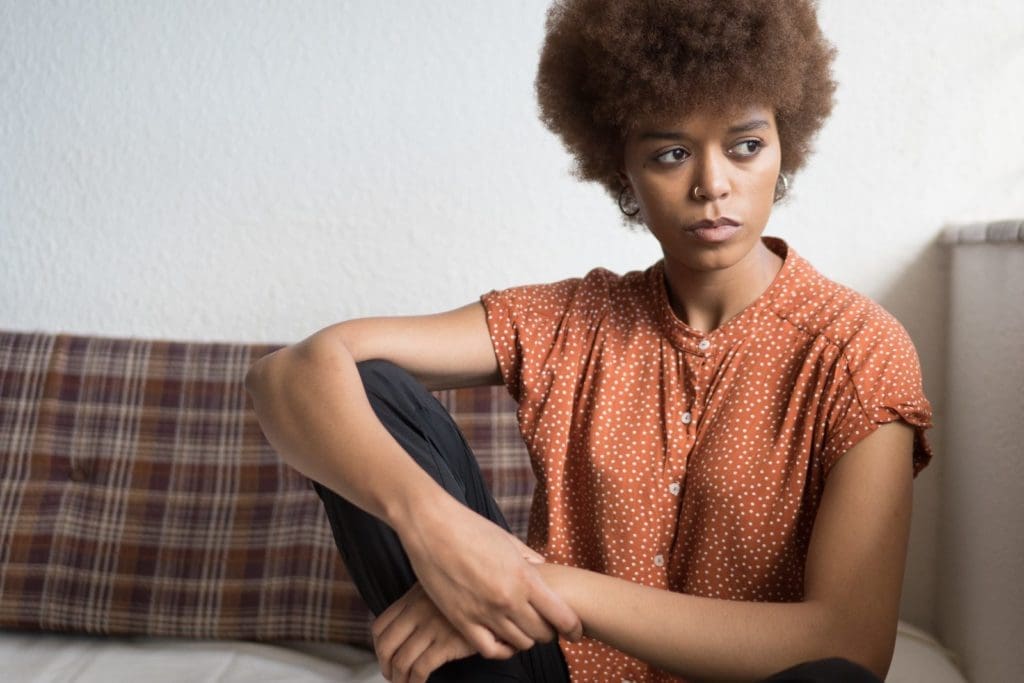What Is Racial Trauma and How to Practice Radical Self-Care
Dr. Charles Muorah has successfully helped clients resolve shame and sexual abuse trauma, cultural, racial, and other kinds of trauma. He uses brain-spotting (BSP) therapy, narrative approach, relational attunements, mindfulness, and empowering language to process with the client coping strategies, adaptation, and resiliency before, during, and after the experience.
Recent instances of police brutality and anti-police brutality protests have made racial injustice and racism the leading topic on the news. It has sparked a global response to fight racism and the damage it causes. There is racism burning deep inside each of us. An unresolved, undue guilt or shame is a power house to perpetrate racism. Distorted beliefs about race and racism serve the need of the privileged race. The recipient of racism is left with intense pain, multigenerational complex trauma, collective trauma, rage, fear, anxiety, grief, and brokenness. The undesirable outcome disproportionately affects people of all races. “No matter how big a nation is, it is no stronger than its weakest people, and as long as you keep a person down, some part of you has to be down there to hold him down, so it means you cannot soar as you might otherwise” (Marian Anderson).
A courageous conversation on racism is a good place to start social reformation and national healing. Ra cism generates a lot of anger, tension, stress, trauma, and other intense emotions. The discussion itself can be traumatic for some people. It is a priceless gift when a person of color trusts you enough to share about a racially traumatic experience. Educational and emotional process, attunement, acknowledgement of one’s ignorance, purposeful mindfulness, trusting, and believing what the recipient said happened makes healing occur both ways. For this reason, it is necessary to create a safe forum to discuss racial trauma and how it affects us physically, emotionally, cognitively, and spiritually. Create time and sacred space for doubt or complexity inside of you. Trust yourself and the process as a pathway for you to heal and become anti-racist. Hang in there long enough and transition into a committed ally with those fighting to eradicate racism. A half or a temporary ally is no ally.
cism generates a lot of anger, tension, stress, trauma, and other intense emotions. The discussion itself can be traumatic for some people. It is a priceless gift when a person of color trusts you enough to share about a racially traumatic experience. Educational and emotional process, attunement, acknowledgement of one’s ignorance, purposeful mindfulness, trusting, and believing what the recipient said happened makes healing occur both ways. For this reason, it is necessary to create a safe forum to discuss racial trauma and how it affects us physically, emotionally, cognitively, and spiritually. Create time and sacred space for doubt or complexity inside of you. Trust yourself and the process as a pathway for you to heal and become anti-racist. Hang in there long enough and transition into a committed ally with those fighting to eradicate racism. A half or a temporary ally is no ally.
It is more prevalent that racism targets people of color making them feel unsafe and insignificant in our communities. Sometimes the tactics of microaggressions are used – brief and commonplace verbal, behavioral, or environmental indignities, whether intentional or unintentional, that communicate hostile, derogatory, or negative racial slights and insults toward people of color. It is like stoning someone to death with peanuts and offering them a sip of water from time to time. At first it may seem harmless, but the venom penetrates under your skin like a snake bite.
With time, continuous tiny drops of water make a hole on a marble floor. Similarly, racial trauma wears on us over time. It is not just a one-time incident; it is the accumulation of experiences.
As a person of color and an immigrant, I have experienced numerous racial traumas in different settings. My own awareness and clinical sense inform me that the traumatic racial experience and pain can be as intense as that of a person who withstands a physical attack or abuse. Victims of racial trauma bear invisible emotional and cognitive wounds, bodily pain, and fractured bones of the soul. As we support other victims of trauma, we should do the same for those with racial trauma and get the knee off their neck.
Mind-Body Connection
Racial trauma may not directly cause bodily harm, but for the victim it is a psycho-physical experience. The body remembers! And the mind stores the memory. I encourage you to be courageous: the body has an enormous capacity for healing.
Racially traumatic events, stress, and post-traumatic stress traumatize both the body and the mind, triggering batteries of emotions. Each emotion is expressed in a different part of the body and has its own manner in which it is manifested physically. They serve as “signposts to hot spots” (McNeilly, 2000, P. 53) in the psyche directing attention to possible actions. They offer cues to possible areas of engagement with the racially traumatized to influence desirable change within the person’s life context and wellness.
James Zullo explains what happens when feelings are not outwardly expressed:
“We think about our feelings and get migraine and headaches;
We swallow our feelings and get ulcers;
We carry the weight of our feelings and get back pain;
We sit on our feelings and get hemorrhoids”
(Whitehead, E. & Whitehead, J., 2010, p. 13).
Some Footprints of Racial Trauma
- Intrusive thoughts, flashbacks, difficulty concentrating, irritability, and jumpiness
- Impairment at work/school and everyday activity
- Low self-esteem, self-concept, and self-confidence
- Powerlessness, helplessness, fear, hopelessness, feelings of mistrust and betrayal
- Shame, self-blame, guilt, and rejection
- Feelings of humiliation, worthlessness, and confused sense of self
- Outbursts of anger, sadness, and difficulty concentrating
- Hyper vigilance, feeling alienated and alone
- Generalized anxiety, panic attacks, and depression
- Suicidal thoughts and feelings
- Bodily aches, pain, and fatigue
- Difficulty falling or staying asleep
- (Increased) substance abuse and binge eating
Race-related trauma victims may respond with disbelief, shock, or dissociation, which can inhibit their ability to respond to the incident in a healthy manner.
Radical Self-Care: Recovery and Wellness Tips
Respect and how to safely narrate your story
Racism and its trauma devalue your personhood. Respecting your sacred space, creating a safe environment, empathic and emotional listening, tapping into your inner resources/refuge (such as strength, values, and spirituality) and the people you trust will help reestablish your trust system and sense of worthiness. Seek support and help from family members, friends, and persons/ places of refuge. Timely brain-spotting or psychotherapy helps racial trauma victims to experience restitutive emotional experiences, reinstate the protective function of fear, re-establish trust and sense of belonging.
Short-term and long-term self-care
Individual experiences and needs are different. Honor your experiences and needs. Bearing in mind the totality of your wellbeing, action plans and tools to work with, your immediate and long-term needs would be developed based on your needs, resources, ability, and capacity.
Racism directly attacks your identity, sense of worthiness, and human dignity. It is important to manage and maintain healthy distance between you and toxic people or environments. Empathy, non-judgment, and empowering language will help to reaffirm who you are.
Identify and outwardly express your emotions and feelings
Racial trauma has left you emotionally convoluted, working with a therapist or counselor will help you learn how to acknowledge and befriend these emotions. As your efforts progress, you realize that these frightened arousals are not enemies after all. You have a great potential to transform painful emotions and establish a healthy self-care routine. Give your brain permission to access and heal the painful memories and spots in your body.
Anger management
Your anger tells you that something unacceptable has happened to you and you need to protect yourself. Addressing and working through racial trauma will help you to learn how to identify your anger style and triggers, the context of your anger and behaviors, and how to use your anger in a healthy and productive manner.
Healthy lifestyle, attitudes, and behaviors
This means establishing healthy habits around things like food, sleep, sex, relationships, work, medical needs, hobbies, and socializing. A therapist will work with you to develop healthy habits using brainspotting and cognitive behavioral therapy tools.
Relaxation exercise
Relieving stress and inter-generational issues will reduce other physical symptoms and improve one’s quality of life. Some helpful relaxation techniques are: deep breathing, body scan meditation, mindfulness meditation, prayer, yoga and similar exercises, guided imagery and visualization.
About the author, Charles C. Muorah, PhD, STL, LMFT
Dr. Muorah has successfully helped clients resolve shame and sexual abuse trauma, cultural, racial, and other kinds of trauma. He uses brain-spotting therapy and narrative approach to process with the client coping strategies, adaptation, and resiliency before, during, and after the experience. Relying on the client’s own word, empathizing, and using solution-focused empowering language and mindfulness techniques he disposes the client to create a new meaning from the traumatic experience and reconstruct one’s life the way one would like it to be. This provides a new foundation for establishing a long-term self-care system. He uses relational attunement to empower the racially traumatized to realize that one’s life is bigger than the racial traumatic event.
References
Chou, T., Asnaani, A., & Hofmann, S. G. (2012). Perception of Racial Discrimination and Psychopathology Across Three U.S. Ethnic Minority Groups. Cultural Diversity and Ethnic Minority Psychology, 18(1), 74-81.
Goldenberg, J. & Hollander-Goldfein, B. (2012). Resilience After Prolonged Trauma. An Integrated Framework, in Hollander_Goldfein, B., Isserman, N., & Goldenberg, J., Transcending Trauma, Routledge Taylor & Francis Group, New York, pp. 13-35.
McNeilly, R. (2000). Healing the Whole Person, John Wiley & Sons, Inc., New York.
Rothschild, B. (2000). The Psyhophysiology of Trauma and Trauma Treatment, New York, W. W. Norton & Company.
Whitehead, E. & Whitehead, J. (2010). Transforming Our Painful Emotions. Spiritual Resources in Anger, Shame, Grief, Fear, and Loneliness, Orbis Books, Maryknoll, New York.
Williams, M. (Sep 06, 2015). Assessed January 6, 2018. The Link Between Racism and PTSD.
https://www.psychologytoday.com/blog/culturally-speaking/201509/the-link-between-racism-and-ptsd.


